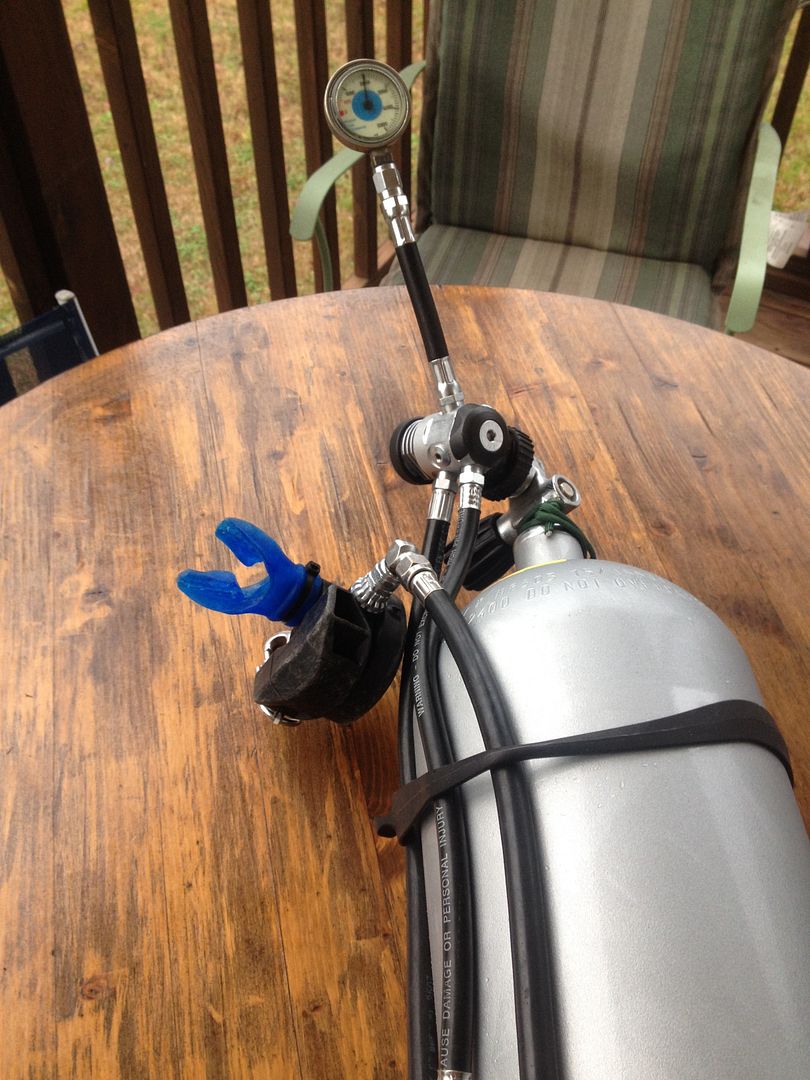Larry, you and Marci are relatively short though. I can't share air on a 5' hose with my normal buddy, just won't work, we are both well over 6'. Either way, the main advantage of the turret in sidemount is the ability for the long hoses to swivel forward when you are sharing air which prevents stress on the crimp connection and also gains you 4-6" of hose length lost due to the bend.
If 5' is too short, 6' would probably work just fine, and still not extend below a longer tank like an LP 85.
In a tight restriction where you are in trail, it can be a little snug with a 5' hose even at 5'9" however you can also do it unconventionally and put the OOG diver in the rear during the restricted portion of the dive, which gives a lot more room, or you can swap tanks if you've got room to do so before a restriction.
The point here is that we've tried it leading and following and it works, but the odds of a side mount diver being totally out of gas and having to share are slim and none, and in the rare case where that might happen, it'll be an issue of the OOG diver running out somewhere prior to the exit, so share gas in the fat parts of the cave so that the OOG diver can go back on his or her remaining gas in the skinny parts of the cave.
In that regard, I'd rather not compromise a clean configuration on 100% of our diving in preparation for an very unlikely event, that can still be managed otherwise.
Plus, in addition to cold water, the Mk 17's sealed design is ideal for heavily silted side mount passages. I'll find a lot of gook hiding in the nooks and crannies when I service them, but the inside of the ambient chamber is still nice and shiny. That is not the experience I have with our piston stage regulators.
I notice a hose kink on donation if the OOG diver pulls.
I've been considering putting a hose protector on that one connection.
With the hose pointed down that tank there's not much down side to a hose protector.
On the other hand, if the OOG diver kinks the hose, it's self correcting

Marci and I have gas shared (drills) sharing gas coming up from lower, lower Orange Grove, and I led the way out as the OOA diver at a good rate of speed and never kinked a hose to the point of stopping gas flow. Of course, we also don't use miflex hoses as those do have some known issues with kinking and stopping gas flow.





